Collaboration brings together Rad AI’s generative AI radiology reporting solutions and patient follow-up management solution with Bayer’s Calantic™ Digital Solutions Platform
NATIONAL HARBOR, Md.--(BUSINESS WIRE)-- As experts from around the globe gather at the annual Society for Informatics in Medicine (SIIM) conference, Bayer and Rad AI are announcing a collaboration to bring Rad AI’s cutting edge AI radiology operational solutions to Calantic™ Digital Solution customers.
Rad AI’s radiology speech recognition reporting solution, AI-driven patient follow-up management, and automated radiology impression generation technologies complement Bayer’s Calantic™ Digital Solutions platform, enabling more hospitals and health systems to benefit from Rad AI’s generative AI capabilities.
Imaging data accounts for about 90 percent of all healthcare data1, and the number of images continues to grow, increasing the workload for radiologists on top of resource constraints. At the same time there is a growing need to demonstrate value from AI deployments. This collaboration enables Radiology suites to take advantage of operational Radiology AI applications and a scalable deployment platform integrated through one vendor.
Rad AI Reporting helps radiologists create reports faster by using generative AI to organize radiology reports for radiologists allowing them to focus on reading studies as well as integrating stable findings from prior reports. Rad AI Omni Impressions generates customized radiology report impressions from dictated findings, tailored to each radiologist’s language preferences and helping to reducing fatigue. Rad AI Continuity automates the follow-up process for incidental findings, helping to promote timely patient follow-up, and potentially increasing imaging revenue for health systems.
Calantic™ Digital Solutions is a suite of digital radiology AI-enabled clinical and operational applications that assist radiologists and their teams at critical steps within a patient’s journey through the Radiology suite. The Calantic platform is a vendor-neutral, cloud-hosted platform which includes a growing number of applications designed to aid in prioritization, lesion detection and quantification, as well as apps that automate routine tasks, measurements, and improve workflows in Radiology suites. The platform uses a curation approach to select apps based on structured assessment criteria.
"Rad AI and Bayer are dedicated to pioneering innovations that serve hospitals and health systems, allowing for greater access to these advanced technologies. This relationship allows for expanded use of our cutting-edge solutions in hospitals across the country," Doktor Gurson, co-founder and CEO of Rad AI.
“Our customers consistently convey to us that a clear ROI from the use of AI will help to increase confidence and adoption. Demonstrating ROI via operational applications like those on Bayer’s Calantic™ Digital Solutions platform is often an easier path, which is why Bayer is excited to enter into this agreement with Rad AI. This technology has the ability to help physicians optimize and streamline their radiology reporting, and deliver benefits for the patient and the health system,” said Rich Dewit, Senior Vice-President, Digital Solutions, Bayer Radiology.
About Bayer
Bayer is a global enterprise with core competencies in the life science fields of health care and nutrition. Its products and services are designed to help people and the planet thrive by supporting efforts to master the major challenges presented by a growing and aging global population. Bayer is committed to driving sustainable development and generating a positive impact with its businesses. At the same time, Bayer aims to increase its earning power and create value through innovation and growth. The Bayer brand stands for trust, reliability, and quality throughout the world. In fiscal 2022, the Group employed around 99,723 people and had sales of 50.7 billion euros. R&D expenses before special items amounted to 6.2 billion euros. For more information, go to www.bayer.com.
About Rad AI
Rad AI is a radiologist-led AI company. The company has been recognized as one of the most promising healthcare AI companies by CB Insights (Digital Health 50, AI 100) and AuntMinnie (Best New Radiology Software of 2023, Best New Radiology Vendor of 2021). In Dec 2023, an Accenture report noted that Rad AI has the highest influence score and brand buzz of any private company in radiology.
Founded by the youngest US radiologist in history, Rad AI empowers physicians with Al that can potentially save time, reduce burnout, and improve the quality of patient care. Rad AI combines deep expertise in healthcare and AI while building on voluminous proprietary radiology report datasets.
Forward-Looking Statements
This release may contain forward-looking statements based on current assumptions and forecasts made by Bayer management. Various known and unknown risks, uncertainties and other factors could lead to material differences between the actual future results, financial situation, development or performance of the company and the estimates given here. These factors include those discussed in Bayer’s public reports which are available on the Bayer website at www.bayer.com. The company assumes no liability whatsoever to update these forward-looking statements or to conform them to future events or developments.
1S. K. Zhou et al., "A Review of Deep Learning in Medical Imaging: Imaging Traits, Technology Trends, Case Studies With Progress Highlights, and Future Promises," in Proceedings of the IEEE, vol. 109, no. 5, pp. 820-838, May 2021, doi: 10.1109/JPROC.2021.3054390.
2024-06-27





